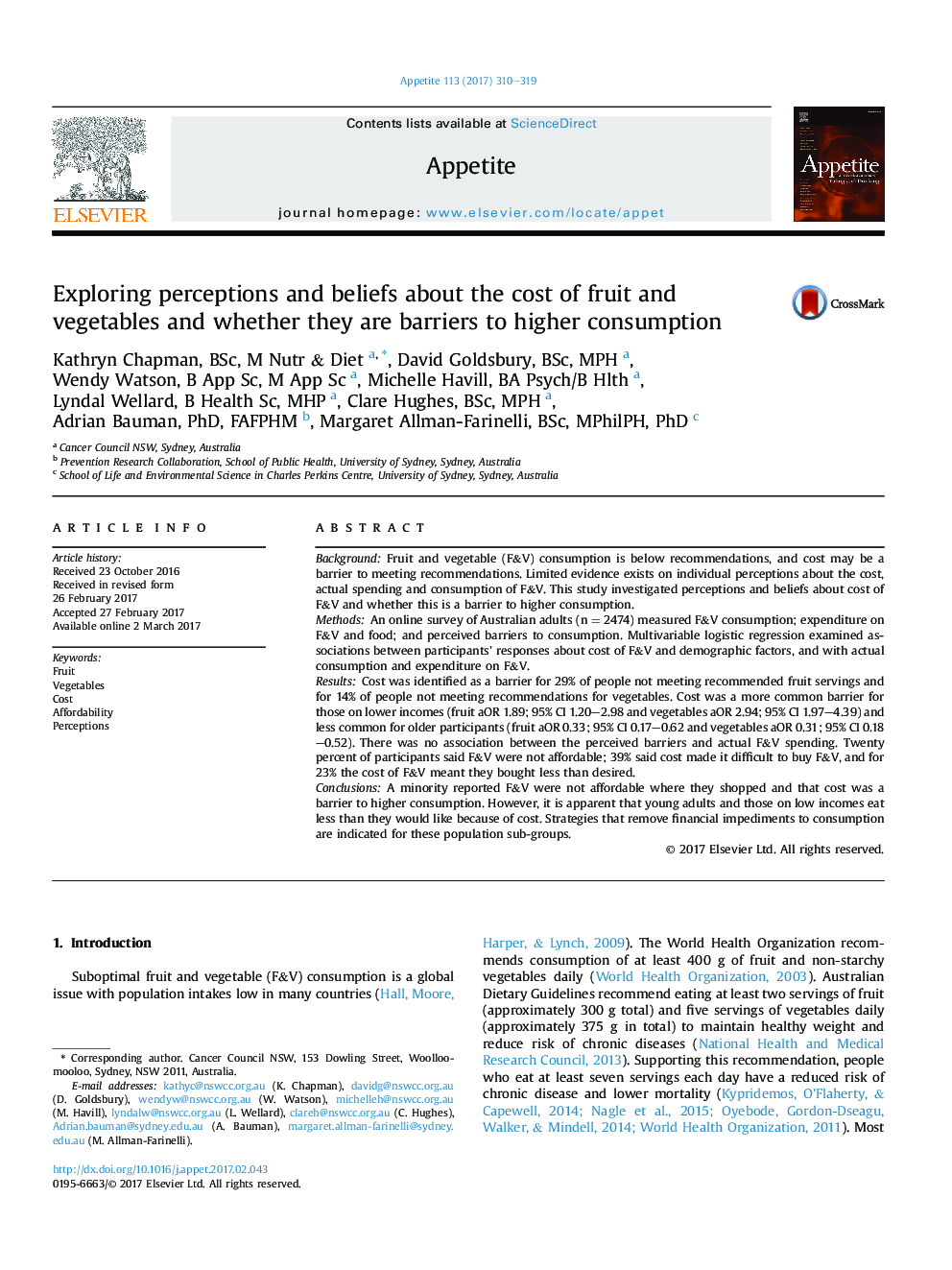| Article ID | Journal | Published Year | Pages | File Type |
|---|---|---|---|---|
| 5044190 | Appetite | 2017 | 10 Pages |
BackgroundFruit and vegetable (F&V) consumption is below recommendations, and cost may be a barrier to meeting recommendations. Limited evidence exists on individual perceptions about the cost, actual spending and consumption of F&V. This study investigated perceptions and beliefs about cost of F&V and whether this is a barrier to higher consumption.MethodsAn online survey of Australian adults (n = 2474) measured F&V consumption; expenditure on F&V and food; and perceived barriers to consumption. Multivariable logistic regression examined associations between participants' responses about cost of F&V and demographic factors, and with actual consumption and expenditure on F&V.ResultsCost was identified as a barrier for 29% of people not meeting recommended fruit servings and for 14% of people not meeting recommendations for vegetables. Cost was a more common barrier for those on lower incomes (fruit aOR 1.89; 95% CI 1.20-2.98 and vegetables aOR 2.94; 95% CI 1.97-4.39) and less common for older participants (fruit aOR 0.33; 95% CI 0.17-0.62 and vegetables aOR 0.31; 95% CI 0.18-0.52). There was no association between the perceived barriers and actual F&V spending. Twenty percent of participants said F&V were not affordable; 39% said cost made it difficult to buy F&V, and for 23% the cost of F&V meant they bought less than desired.ConclusionsA minority reported F&V were not affordable where they shopped and that cost was a barrier to higher consumption. However, it is apparent that young adults and those on low incomes eat less than they would like because of cost. Strategies that remove financial impediments to consumption are indicated for these population sub-groups.
